 Mark Twain gamely opens Adventures of Huckleberry Finn with a warning to readers: “Persons attempting to find a motive in this narrative will be prosecuted.”
Mark Twain gamely opens Adventures of Huckleberry Finn with a warning to readers: “Persons attempting to find a motive in this narrative will be prosecuted.”
In 1901, the highest court in New York defined motive as the “moving power” that drives an action. Motive, however, is rarely an essential element of criminal liability, for good reason: If the government had to prove beyond a reasonable doubt that you had a motive for your life story, would you be convicted?
The “moving power” in Huckleberry Finn is the current of the Mississippi River. Plot points drift into focus like ideas arising in consciousness. Huck sees “cord-wood floating down, and pieces of log rafts—sometimes a dozen logs together; so all you have to do is catch them and sell them to the wood yards and the sawmill.” From Huck’s vantage point, the river hurls into view a log, a raft, a canoe, a two-story house, and a gang of murderers, all in the novel’s first 100 pages. Once Huck and his companion Jim push off into the middle of the Mississippi, they “let the raft take care of itself” and “float wherever the current wanted.”
When Huck and Jim try to fight the current, they go hurtling down the Mississippi in what has become the most consequential missed turn in American literature. Huck tells us, “We judged that three nights more would fetch us to Cairo, at the bottom of Illinois, where the Ohio River comes in, and that was what we was after.” At first, Jim convinces himself that the Ohio River would resemble obscenity—they’d know it when they saw it. “Jim said if the two big rivers joined together there, that would show” Huck tells us, but he worries that “we might think we was passing the foot of an island and coming into the same old river again.” Near the mouth of the Ohio River, Huck realizes Jim would “be a free man the minute he seen [the Ohio], but if he missed it he’d be in the slave country again…. I begun to get it through my head that he was most free—and who was to blame him for it.”
The Mississippi forks several times before the Ohio River, warranting a measure of grace to travelers who miss their exit. Besides, Huck and Jim were runaways—the former presumed dead, the latter wanted for murder—traveling under the cover of night. We can forgive them for failing to distinguish the green water of the Ohio from the muddy water of the Mississippi.
Imagine the second-order effects if Huck and Jim had made that sharp left turn up the Ohio: Jim would have pivoted to freedom; there would have been no “adventures plumb to the mouth of the river”; no duke, no dauphin, no chance for redemption. If we take Hemingway’s claim about the seminal nature of Huckleberry Finn to its logical conclusion, there would be no “modern American literature.”
Huck and Jim were not the only ones struggling to chart a course up the Ohio River. Twain was in a fog of his own. According to the explanatory notes to the Penguin Classics version of the novel,
In August 1876, [Twain] seems to have… run[] into difficulties and set[] the manuscript aside. The book was developing into something more than an episodic, lighthearted tale for boys, and, besides, he knew nothing of the Ohio River country that Jim should have turned toward. [Three years later], [Twain] took up the manuscript again and began to introduce new themes, new characters, and somewhat casual explanations for not taking Huck and Jim up the Ohio toward freedom but on down the Mississippi into territory where slavery existed in some of its worst aspects.
 The novel’s opening chapters, in which Huck suffers at the hands of his abusive and alcoholic Pap, never read like a “lighthearted tale,” but there is no question that the seam in the narrative shows at the mouth of the Ohio River. Twain’s choice to steer Huck and Jim toward the familiar river towns of the Mississippi Delta was not just a matter of the author “writing what he knows.” To quote Stephen King: “[P]lotting and the spontaneity of real creation aren’t compatible….
The novel’s opening chapters, in which Huck suffers at the hands of his abusive and alcoholic Pap, never read like a “lighthearted tale,” but there is no question that the seam in the narrative shows at the mouth of the Ohio River. Twain’s choice to steer Huck and Jim toward the familiar river towns of the Mississippi Delta was not just a matter of the author “writing what he knows.” To quote Stephen King: “[P]lotting and the spontaneity of real creation aren’t compatible….
[M]y basic belief about the making of stories is that they pretty much make themselves…. I want to put a group of characters (perhaps a pair; perhaps just one) in some sort of predicament and then watch them try to work themselves free. My job isn’t to help them work their way free, or to manipulate them to safety.
After three years of trying to manipulate Huck and Jim up the Ohio River, Twain stopped steering the raft and let it boom down the river. In the end, the pair is hurled south because that’s the way the Mississippi River flows. Their fates were sealed as soon as the universe began with a bang.
“Thinks I,” Huck tells us, “it won’t do to paddle.”
*
In the summer of 1769, a young James “Jemmy” Madison and an enslaved boy named Sawney rode north from Virginia to the College of New Jersey (now Princeton University). One was the timid and frail future “Father of the Constitution;” the other the son of parents who likely endured the Middle Passage. The Mark Twain version of Jemmy and Sawney’s journey would have cast them alone against the elements, with Madison reading Virgil or Ovid aloud by firelight. The historical record fails to cooperate. For one thing, the boys were accompanied by one of Madison’s tutors, as well as the tutor’s brother. And the power dynamic between the boys defied expectations.
Little Jemmy was a shy, sickly kid, hardly on a glide path to the presidency. He seized up from debilitating episodes similar to panic attacks. One of his most searing early memories was the sound of a scream from the nearby Blue Ridge Mountains, where the French and Indian War was presently raging. He would have also learned as a young boy that his grandfather was fatally poisoned by his slaves. “As to myself,” Madison wrote early in life, “I am too dull and infirm now to look out for any extraordinary things in this world.” He compared feeling lost later in life to being “in the wilderness without a single footstep to guide” his way. Sawney served as one of those guides. As history professor Douglas P. Chambers notes:
Some individual life histories of the enslaved population may be pieced together, especially those of exceptional individuals whose lives constantly intersected with those of their masters. But even the few who show up regularly in the surviving sources require a great deal of inference to give them agency in the events of their lives.
Thanks to the work of Chambers, as well as archivists and historians at James Madison’s Montpelier, Sawney comes down to us with a great deal of agency, appearing frequently enough in Madison family letters and wills to surface his contributions. On the journey to Princeton, Chambers writes, “Sawney had primary responsibility for the slightly built and shy teenager; the slave either had impressed [Madison’s father] or had become friends with [Madison].” “Friends” is a fraught word in this context; Sawney was “granted” to Madison in his maternal grandmother’s will. The two boys grew up together at a time when the closest neighbors were miles of forest away.
Madison and Sawney would have made their way to Princeton on horseback through Virginia’s forests, shriveling under record-setting heat to Fredericksburg, before tracking the Potomac north to Georgetown. Continuing up the Chesapeake Bay, through sheep-filled Maryland farms to the trading village of Wilmington, Delaware, they would have crossed the Schuylkill River into Philadelphia, where Madison would make his name 18 years later. From there, they would have followed the Delaware River north to the small town of Princeton, New Jersey, where Madison enrolled in college late in the summer term of 1769.
We know from Madison’s letters that Sawney stayed at Princeton before returning to Virginia, where the demands of the tobacco trade were waiting. Throughout Madison’s life, he relied on Sawney to manage the family’s finances and oversee farms at Montpelier. In her will, Madison’s mother Nelly stipulated that Sawney could choose his own master upon her death—a gesture far short of outright freedom and, Chambers suggests, indicative of Sawney’s status as “a favorite slave” of Nelly’s. Sawney died in the 1830s, still enslaved.
There is only one known instance of Madison freeing an enslaved person. In 1783, when he was 32 years old, Madison wrote to his father about an enslaved man named Billey:
On view of all circumstances I have judged it most prudent not to force Billey back to [Virginia]… and have accordingly taken measures for his final separation from me. I am persuaded his mind is too thoroughly tainted to be a fit companion for fellow slaves in [Virginia]. The laws here do not admit of his being sold for more than 7 years. I do not expect to get near the worth of him; but cannot think of punishing him by transportation merely for coveting that liberty for which we have paid the price of so much blood, and have proclaimed so often to be the right & worthy pursuit, of every human being.
Far from a satisfying repudiation of slavery, the letter calls to mind Huck’s realization at the threshold of the Ohio River that Jim already “was most free.” Billey would serve another master for seven years before becoming a free man in the eyes of the law. Of the many founding fathers who enslaved human beings, some, like George Washington, eventually freed their slaves, while others, like Thomas Jefferson, mostly did not. Madison falls into that indefensible second camp.
 The law, at this point, appears unequal to the task of abolishing slavery, offering such “remedies” as choosing one’s own master, waiting seven years for freedom, or hoping a slaveowner does the right thing in his will. The law makes just enough appearances in Huckleberry Finn to shake our faith in the system. Twain’s shambolic court system echoes the mindless litigation of Jarndyce and Jarndyce made famous by Charles Dickens in Bleak House. Huck tells us that the well-intentioned Judge Thatcher—who was safeguarding Huck’s money—and Huck’s caretaker, the Widow Douglass, “went to law to get the court to take me away from [Pap] and let one of them be my guardian… [but] [t]hat law trial was a slow business; appeared like they warn’t ever going to get started on it.” Then there’s the matter of Miss Watson’s will. “Old Miss Watson died two months ago,” Huck tells us, “and she was ashamed she ever was going to sell [Jim] down the river, and said so; and she set him free in her will.” The legal document that set Jim free was a worthless piece of paper for two months before word got down the river to Jim.
The law, at this point, appears unequal to the task of abolishing slavery, offering such “remedies” as choosing one’s own master, waiting seven years for freedom, or hoping a slaveowner does the right thing in his will. The law makes just enough appearances in Huckleberry Finn to shake our faith in the system. Twain’s shambolic court system echoes the mindless litigation of Jarndyce and Jarndyce made famous by Charles Dickens in Bleak House. Huck tells us that the well-intentioned Judge Thatcher—who was safeguarding Huck’s money—and Huck’s caretaker, the Widow Douglass, “went to law to get the court to take me away from [Pap] and let one of them be my guardian… [but] [t]hat law trial was a slow business; appeared like they warn’t ever going to get started on it.” Then there’s the matter of Miss Watson’s will. “Old Miss Watson died two months ago,” Huck tells us, “and she was ashamed she ever was going to sell [Jim] down the river, and said so; and she set him free in her will.” The legal document that set Jim free was a worthless piece of paper for two months before word got down the river to Jim.
We cannot blame Madison for the absurdities of state law and civil procedure, but as the principal architect of the federal system of government in the U.S., he deserves blame for its bugs—and its features.
*
What looks like an improbable journey from a sickly kid to the Father of the Constitution upon close inspection starts to feel almost inevitable. Madison was pushed along not by the Mississippi River but by an equally powerful current. “When I was [a boy], a book fell into my hands, which I read, as I believe, with particular advantage.” He was referring to The Spectator, the British periodical published by Joseph Addison and Richard Steele, who endeavored to bring “out of closets and libraries” ancient wisdom from writers like Horace and statesmen like Cicero. The Spectator, Madison wrote, fills “youthful minds [with] an appetite for knowledge, and a taste for the improvement of the mind.”
After the book “fell into” his hands, Madison chanced upon a Scottish tutor named Donald Robertson, about whom Madison would later write, “[A]ll that I have been in life I owe largely to that man.” Robertson transported the ideas of the Scottish Enlightenment across the Atlantic Ocean to a simple, wood-framed schoolhouse in the Virginia countryside where a young Madison studied for nearly five years and likely doodled a solar system ringed around a smiley-faced sun. That schoolhouse overlooking the Mattaponi River became a nursery of future Revolutionary War heroes, leading statesmen, and famous explorers. Madison’s immersion in the “Scottish School” helps explain his decision to forgo college in Virginia for the chance to study at Princeton under John Witherspoon, a leading evangelist of the Scottish Enlightenment. The spark of light from Ancient Greece glowed in Scotland without a flame before crossing the Atlantic Ocean and catching fire.
Madison had never come close to seeing the Mississippi River during the debates over the Constitution, but it’s hard to overstate the importance of the Mississippi to his project. At the Virginia Ratifying Convention of 1788, when Madison wasn’t being accused by Patrick Henry of trying to free the “slaves” (not the word Henry chose), Madison was countering Henry’s claims that the Constitution would undermine the ability of the states to navigate the Mississippi and allow Spain to control the river indefinitely. Madison was able to steward the Constitution to ratification by arguing that the current federation of American states was too ineffective to
secure to us the actual enjoyment of the navigation of the Mississippi. Our weakness precludes us from it. We are entitled to it; but it is not under an inefficient government that we shall be able to avail ourselves fully of that right…. [I]t will be far better secured under the new government than the old, as we shall be more able to enforce our right [to its waters].
 Madison won the debate with Henry, in part, by borrowing the Scottish philosopher David Hume’s dream of “a perfect commonwealth.” The common thinking in the founding era was that a constitutional republic could flourish only in a small city or territory, but Hume believed a large stretch of land had its advantages. In the 1758 edition of Essays, Moral, Political, and Literary, which Madison returned to again and again, Hume wrote, “Though it is more difficult to form a republican government in an extensive country than in a city; there is more facility, when once it is formed, of preserving it steady and uniform, without tumult or faction.” Hume’s counterintuitive claim explains why Madison pushed, in his words, to “extend the sphere,” not only during the ratifying conventions by encouraging Americans to populate the Mississippi Delta, but later as Secretary of State with the Louisiana Purchase from France that doubled the size of the United States overnight. If someone splashes water in a bathtub, it causes a huge commotion. If someone splashes water in the ocean, it barely causes a stir.
Madison won the debate with Henry, in part, by borrowing the Scottish philosopher David Hume’s dream of “a perfect commonwealth.” The common thinking in the founding era was that a constitutional republic could flourish only in a small city or territory, but Hume believed a large stretch of land had its advantages. In the 1758 edition of Essays, Moral, Political, and Literary, which Madison returned to again and again, Hume wrote, “Though it is more difficult to form a republican government in an extensive country than in a city; there is more facility, when once it is formed, of preserving it steady and uniform, without tumult or faction.” Hume’s counterintuitive claim explains why Madison pushed, in his words, to “extend the sphere,” not only during the ratifying conventions by encouraging Americans to populate the Mississippi Delta, but later as Secretary of State with the Louisiana Purchase from France that doubled the size of the United States overnight. If someone splashes water in a bathtub, it causes a huge commotion. If someone splashes water in the ocean, it barely causes a stir.
Returning again and again to the analogy of the solar system he drew as a boy, Madison imagined Virginia and Maryland orbiting the sun like Venus and Mars. Without a strong central government, he wrote, the states “will continually fly out of their orbits and destroy the whole harmony of the political system.”
About halfway through Huckleberry Finn, Huck tells us:
Sometimes we’d have that whole river all to ourselves for the longest time…. We had the sky, up there, all speckled with stars, and we used to lay on our backs and look up at them, and discuss about whether they was made, or only just happened—Jim he allowed they was made, but I allowed they happened; I judged it would have took too long to make so many.
It took Madison years of studying failed ancient and modern governments to make a star in a system that feels galactically incremental, but benefits from the laws of gravity in times of crisis.
. . .
The Irish writer Fintan O’Toole has wondered whether we could apply the jury trial—the system Madison copied and pasted from the Ancient Greeks into the Fifth and Sixth Amendments—to questions outside of criminal and civil litigation. In other words, instead of putting bills to elected representatives or ballot measures to voters, we could impanel a 12-person jury of our peers to decide important questions of the day. Of course, in theory, our trust in a jury verdict is not premised on the wisdom of 12 people but on evidentiary foundations developed over centuries to safeguard the testimony and documents put in front of the jury.
If we were to put to a jury the question of whether Madison fathered a document designed to preserve the institution of slavery, his ownership of slaves would be the subject of extensive pre-trial litigation outside of the presence of the jury. As a rule, a defendant’s other crimes, wrongs, or “bad acts” are inadmissible evidence of “character” or “propensity.” Courts treat this kind of evidence with extreme caution because of the real risk that a jury will conclude that the defendant committed Crime A and therefore committed Crime B. One exception is where evidence of other “bad acts” is offered not to show that the defendant committed the charged crime, but that he had a motive to do so.
The judge would caution the jurors that they are to consider Madison’s ownership of slaves for the limited purpose of determining whether he had a motive to continue the institution of slavery when he arrived at Independence Hall in 1787. On balance, Madison’s ownership of slaves would likely come into evidence to show that he had a motive—a profit motive—to perpetuate the institution of slavery. No matter how careful the limiting instruction, some jurors would likely vote to convict Madison based on his ownership of slaves, without considering all of the evidence.
 Black’s Law Dictionary, the nation’s most frequently used legal dictionary, tells us that “[w]hile motive is the inducement to do some act, intent is the mental resolution or determination to do it.” In other words, a motive can help establish intent, but someone with a motive can simultaneously lack intent. As Twain reminds us at the outset of Huckleberry Finn, before we witness Huck and Jim struggle to freedom, motive is beside the point in narrative fiction. The same often holds at trial, where the coin of the realm is not motive, but intent.
Black’s Law Dictionary, the nation’s most frequently used legal dictionary, tells us that “[w]hile motive is the inducement to do some act, intent is the mental resolution or determination to do it.” In other words, a motive can help establish intent, but someone with a motive can simultaneously lack intent. As Twain reminds us at the outset of Huckleberry Finn, before we witness Huck and Jim struggle to freedom, motive is beside the point in narrative fiction. The same often holds at trial, where the coin of the realm is not motive, but intent.
Madison’s letters are filled with pronouncements about the evils of slavery—he called slavery “a sad blot on our free country” and America’s “original sin”—but these are empty words from someone who claimed to own more than 100 men, women, and children. The government could theoretically introduce Madison’s self-serving statements under a hearsay exception, but would have no reason to do so. If Madison took the stand, his prior statements about slavery could come into evidence under limited circumstances. At the end of the day, many of his prior out-of-court statements about slavery hold little evidentiary value.
If we use the framing of American pragmatism that a belief is something upon which one is willing to act, Madison’s intent starts coming into focus. The institution of slavery is embedded throughout the Constitution, but the word “slavery” itself never appears in the document. Article I gives the southern states voting power in the U.S. House of Representatives based on the number of people in the state, “including three fifths of all other Persons.” The Constitution allowed the Atlantic slave trade to continue for another 20 years, until 1808. Article I, Section 9 tucks the words “slave trade” behind the words “[t]he Migration or Importation of such Persons as any of the States now existing shall think proper to admit.”
This wordsmithing did not only cleanse the stain of the word “slavery” from four pieces of parchment, but provided a powerful textual argument. We are reminded by the recent synthesis of historian Sean Wilentz that, more than 20 years after Madison died, Abraham Lincoln gave the speech that propelled him to the presidency. In his Cooper Union Address of February 1860, Lincoln said, “[N]either the word ‘slave’ or ‘slavery’ is to be found in the Constitution… and… wherever in that instrument the slave is alluded to, he is called a ‘person.’” Lincoln added, “[This] mode of alluding to slaves” as persons was “employed on purpose.”
Lincoln spoke as if he had been in the room when the Constitution was drafted because he had read every word of Madison’s notes. Late most nights during the summer of 1787, a candle flickered in Madison’s boarding house, where he wrote down everything he could of the day’s proceedings, “determined…. to preserve, as far as I could, an exact account” of what happened during that fateful summer. As a result, Lincoln knew that during a critical moment of the Constitutional Convention, when many in the hall wanted the document to refer to slaves as “property,” Madison rose from his chair and said, “Slaves are not like merchandise…. [It is wrong] to admit in the Constitution the idea that there could be property in men.” These were not the sort of exculpatory prior statements of a defendant that have no place in the courtroom—these words were instruments for action. Madison’s insistence on the word “person” after weeks of wrangling gave Lincoln, Frederick Douglass, and other abolitionists a crucial foothold.
It’s understandable to think that the Constitutional Convention of 1787 presented an opportunity for a quick pivot up the proverbial Ohio River, without confronting the institution of slavery downriver. We are still working ourselves free from the terrible bargain in the first chapter of the American story, but counterfactuals are a tricky business in law and in literature. If you had been perched on the bank of Cairo, Illinois, as Huck and Jim’s raft was about to float past the Ohio River, would you have warned them? We know everything that happens once they miss the turn; we don’t know what was in store up the Ohio River.
Madison tells us:
The [Deep] Southern States would not have entered the Union of America without the temporary permission of that [slave] trade; and if they were excluded from the Union, the consequences might be dreadful to them and to us…. Great as the evil [of the Atlantic slave trade] is, a dismemberment of the Union would be worse.
The same compromised Constitution that allowed slavery to continue had the potential to outlaw slavery in the Thirteenth Amendment.
Like Huck and Jim, “We boom along down the river, watching for lights.”
The views expressed in the article do not necessarily represent the views of the U.S. Attorney’s Office, the Department of Justice, or the United States.



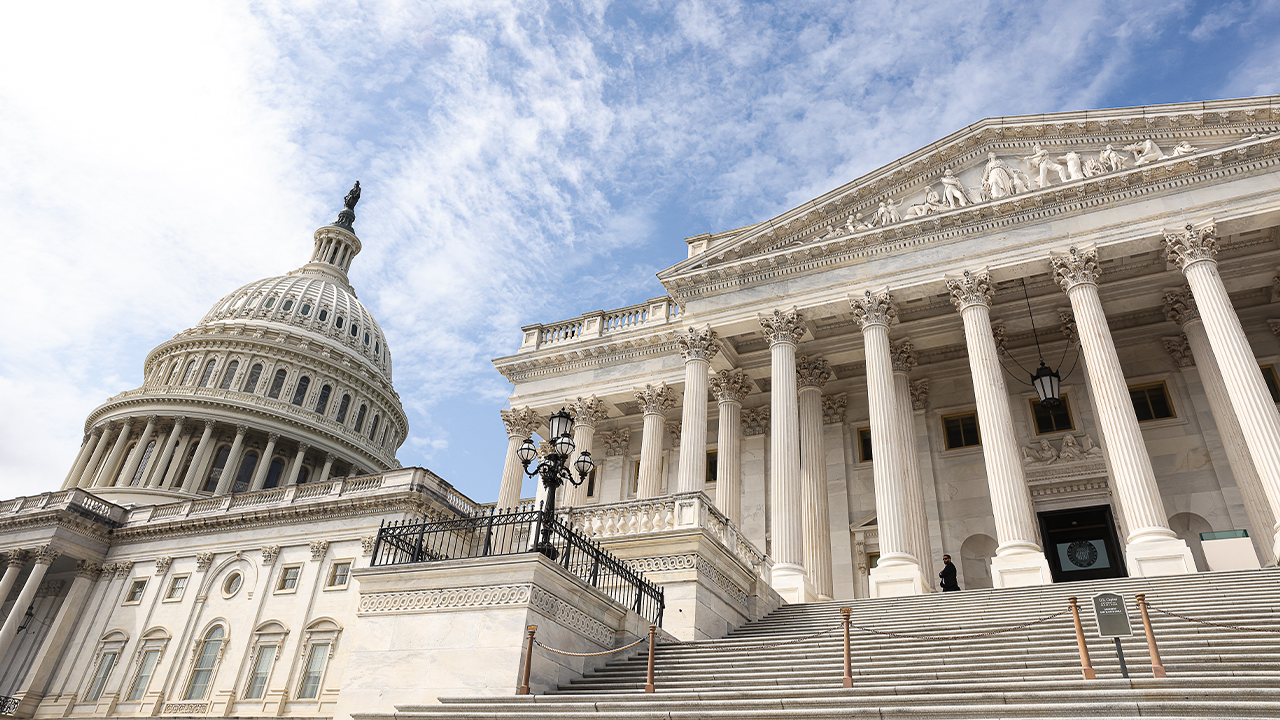










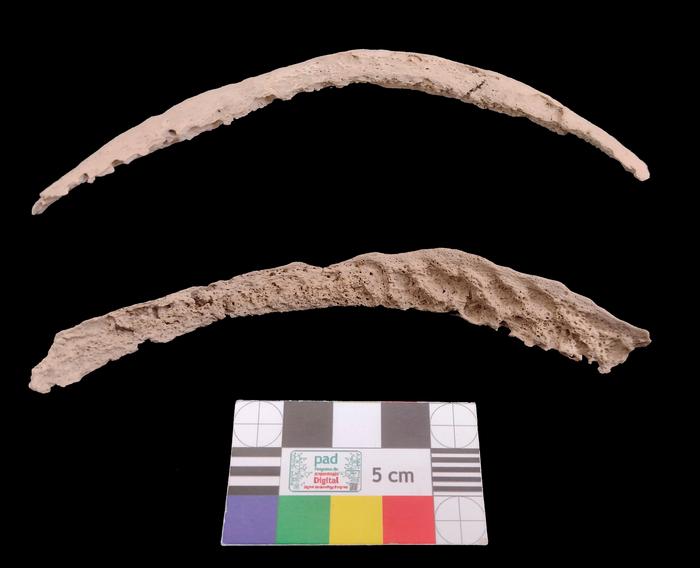

















![[Spoiler] Shot, Wes vs. Csonka [Spoiler] Shot, Wes vs. Csonka](https://www.tvinsider.com/wp-content/uploads/2024/12/fbi-international-408-vo-wes-1014x570.jpg)





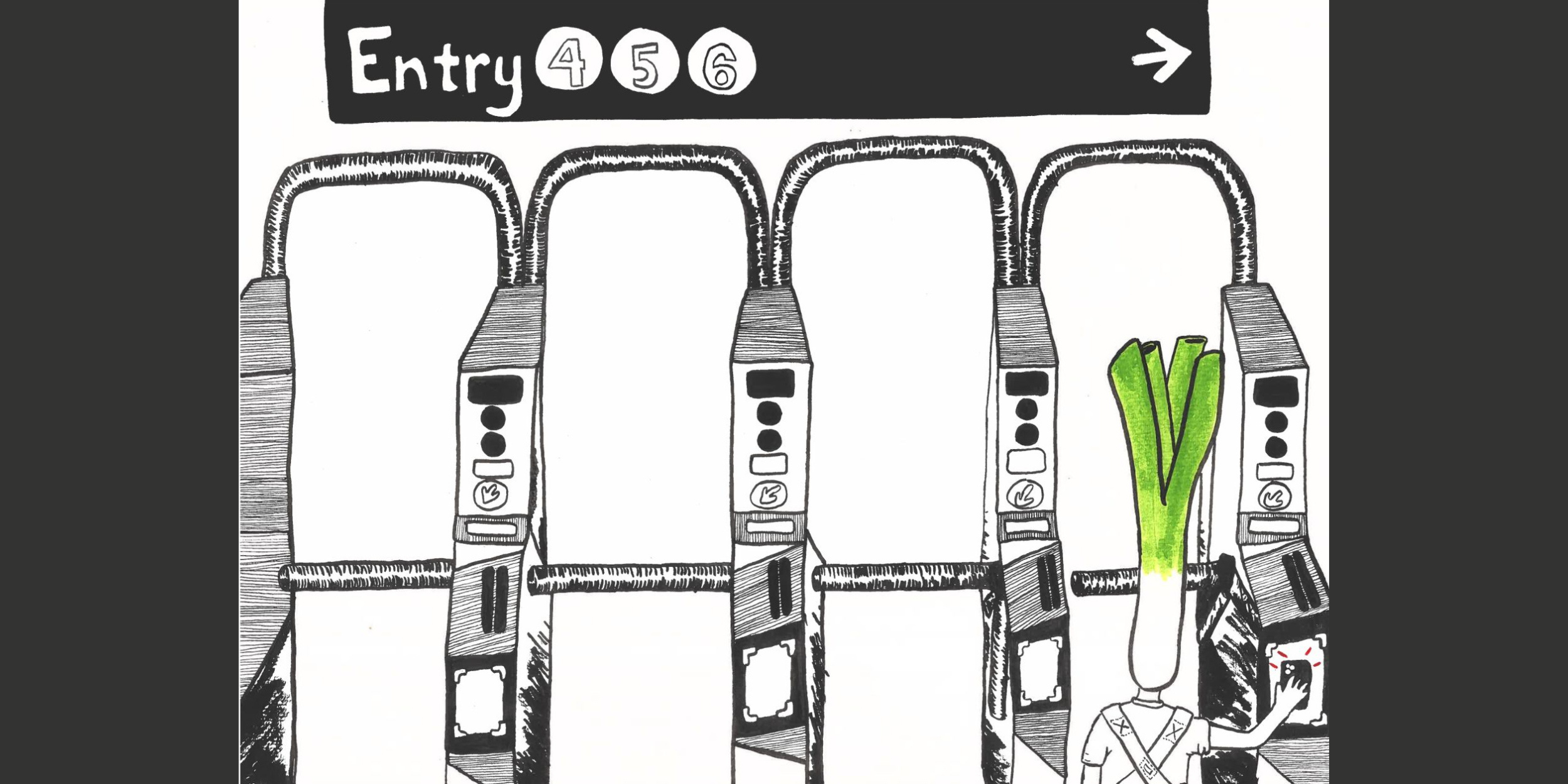






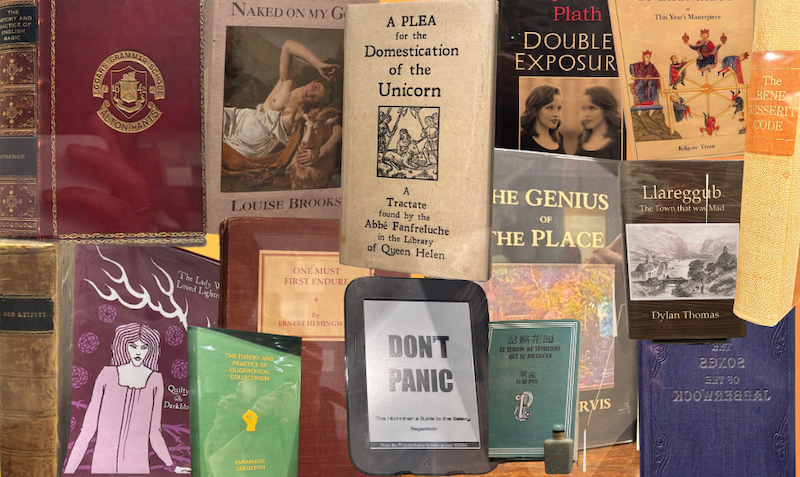

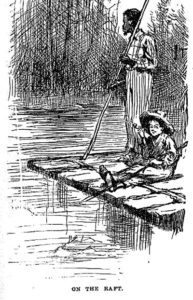












.jpeg)